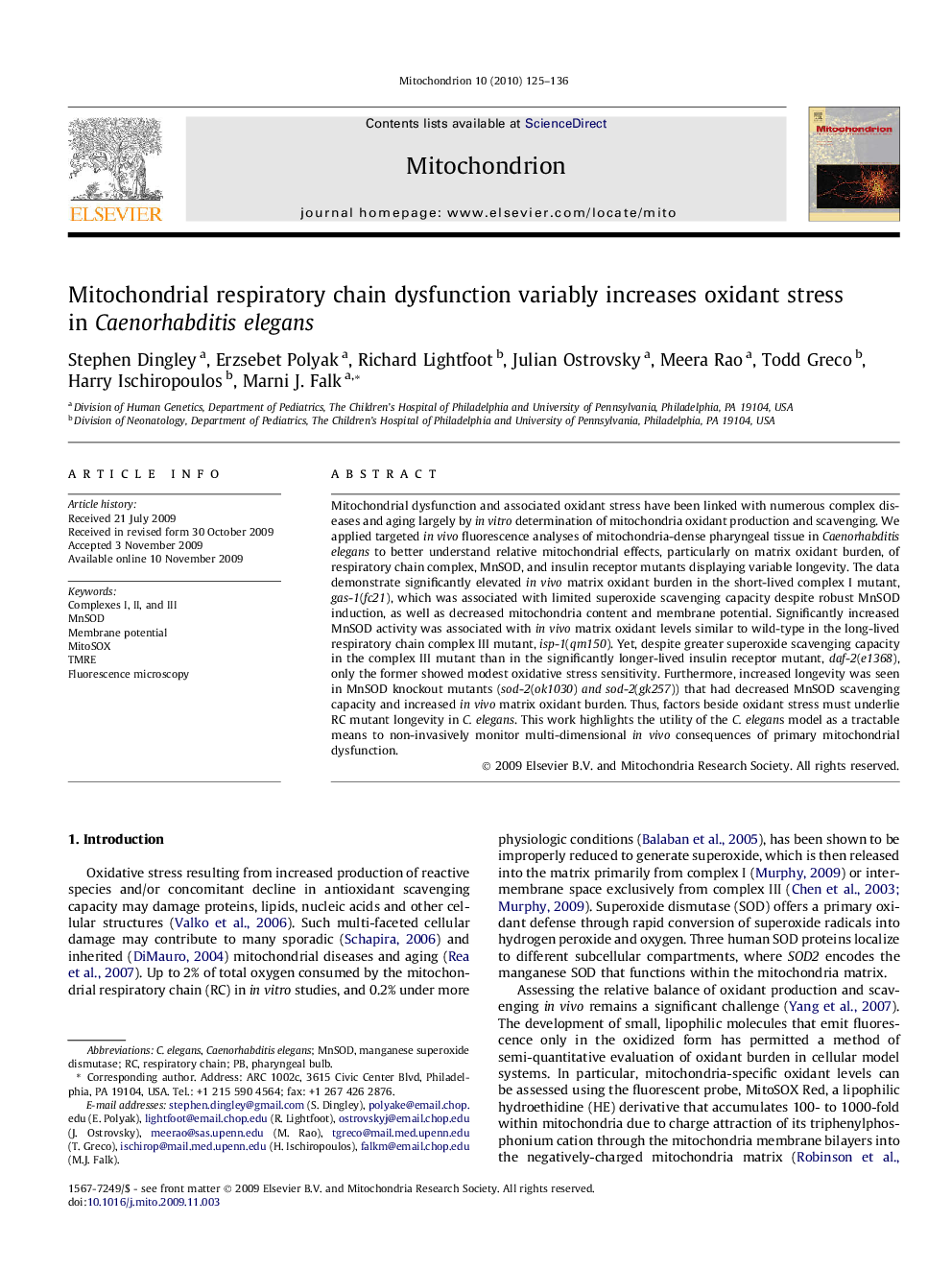| کد مقاله | کد نشریه | سال انتشار | مقاله انگلیسی | نسخه تمام متن |
|---|---|---|---|---|
| 2069008 | 1078371 | 2010 | 12 صفحه PDF | دانلود رایگان |

Mitochondrial dysfunction and associated oxidant stress have been linked with numerous complex diseases and aging largely by in vitro determination of mitochondria oxidant production and scavenging. We applied targeted in vivo fluorescence analyses of mitochondria-dense pharyngeal tissue in Caenorhabditis elegans to better understand relative mitochondrial effects, particularly on matrix oxidant burden, of respiratory chain complex, MnSOD, and insulin receptor mutants displaying variable longevity. The data demonstrate significantly elevated in vivo matrix oxidant burden in the short-lived complex I mutant, gas-1(fc21), which was associated with limited superoxide scavenging capacity despite robust MnSOD induction, as well as decreased mitochondria content and membrane potential. Significantly increased MnSOD activity was associated with in vivo matrix oxidant levels similar to wild-type in the long-lived respiratory chain complex III mutant, isp-1(qm150). Yet, despite greater superoxide scavenging capacity in the complex III mutant than in the significantly longer-lived insulin receptor mutant, daf-2(e1368), only the former showed modest oxidative stress sensitivity. Furthermore, increased longevity was seen in MnSOD knockout mutants (sod-2(ok1030) and sod-2(gk257)) that had decreased MnSOD scavenging capacity and increased in vivo matrix oxidant burden. Thus, factors beside oxidant stress must underlie RC mutant longevity in C. elegans. This work highlights the utility of the C. elegans model as a tractable means to non-invasively monitor multi-dimensional in vivo consequences of primary mitochondrial dysfunction.
Journal: Mitochondrion - Volume 10, Issue 2, March 2010, Pages 125–136